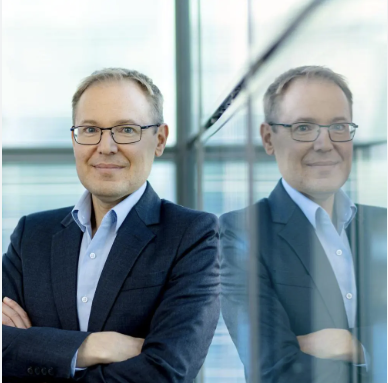‘There aren’t any free lunches’: Fortum’s sustainability head on its dual transition
Tomas Qvickström tells REP about both its transition plans, and the value of building in-house expertise
Deep within Fortum’s annual report, among its CSRD disclosures, are two brief mentions of its work on a “biodiversity transition plan”.
It would be easy to miss the references, amid the 259 pages published on Tuesday, but the work by the energy producer, majority-owned by the Finnish state, is genuinely pioneering.
While climate transition plans have become increasingly common, those for biodiversity are vanishingly small.
Fortum’s plans build on targets it set itself in 2023, after mapping its impacts on nature. They include a commitment to achieve no net loss of biodiversity from its Scope 1 and 2 operations after 2030.
Tomas Qvickström, Fortum’s vice-president of corporate sustainability, tells REP that working on biodiversity is “one or two steps more complex” than climate, because of the multitude of metrics. There is no ‘CO2e’ for nature – instead, the different drivers and localised impacts need to be understood and then translated into a plan.
While Fortum used external consultants for its initial foot-printing phase, Qvickström says it will move the next steps in-house, because that approach often produces better outcomes.
“This way it’s not only a consultancy project, where you end up with something that looks good on paper but maybe nothing really happens,” he explains, adding that the company has already started integrating its progress on biodiversity into its quarterly performance management reviews.
Plan before targets
Fortum is considering joining the Science Based Targets Network, which helps firms set nature-related targets, but hasn’t done so yet.
It’s already a member of the climate equivalent, SBTi, and had its net-zero targets signed off in January.
The firm’s 2023 climate transition plan was key to making sure those targets were credible, Qvickström believes, describing it as “a really essential tool”.
“Some companies have set targets and are then trying to figure out what they need to do, but we did it the other way around,” he explains.
“We wanted to understand what’s required – the implications and costs – before setting them.”
The climate plan, which will remain separate from the biodiversity strategy, gives Fortum a roadmap, Qvickström says, especially for its decarbonisation journey to 2030.

“We have quite concrete levers in place for it, and we know what it takes. That said, it’s not fully fixed: we’ve taken many, but not all the potentially-needed investment decisions yet.”
A huge part of Fortum’s net-zero transition will centre on its shift to clean energy, and it’s already well on its way.
It sold its stake in coal-heavy German energy firm Uniper in 2022, and 98% of its power generation came from renewables and nuclear last year.
Qvickström says setting its targets having already ditched its most polluting assets leaves it with “fewer levers to pull”. But, he adds, when it comes to transitioning “there aren’t any free lunches for anyone”.
EU regulation
He sees Fortum’s reporting under the EU Corporate Sustainability Reporting Directive as the “final part” of its progress.
It’s not just a compliance exercise, he insists.
“Once we had defined our material areas, we worked very closely with our businesses to break down corporate targets and define the action plans after considering the potential implications.”
Moves to simplify CSRD via an upcoming ‘omnibus’ package would be welcome, but he warns that “changes could also mean more work for those that have [already] done it”.

